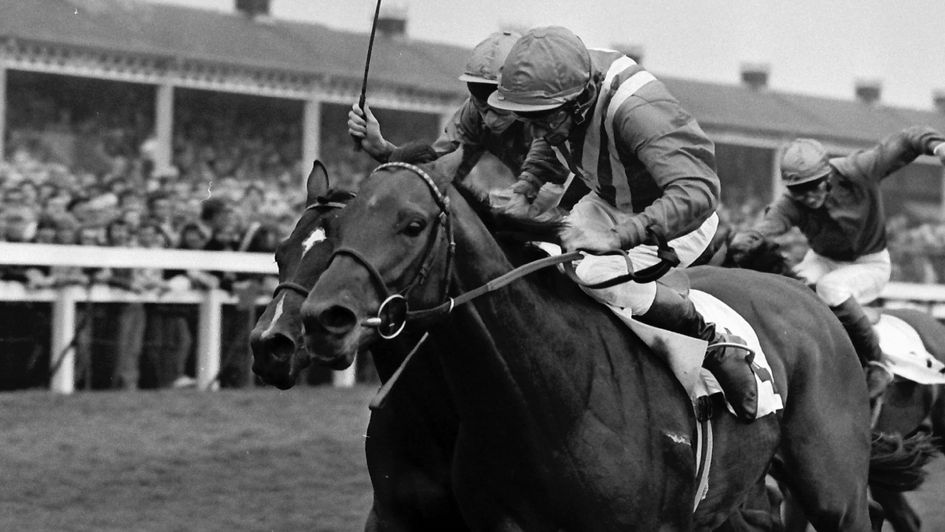If you were part of a generation which venerated flared trousers, long hair, sideburns and the music of the Bay City Rollers, you will be well aware how fashions can change.
In my time, tattoos were very popular in the Seventies and have made a Sprinter Sacre-type comeback in recent years, though one senses enthusiasm might be waning once again.
As the youth of fifty years ago will now be discovering, tattoos don't look quite so cool on wrinkled skin, especially if the Melanie in 'I❤️Melanie' married someone else and now has eight grandchildren.
Sadly, "Bye, Bye Baby" doesn't get too many plays on the radio these days either.
In the Seventies and Eighties, horse racing was much more popular than it is now. Living standards were very much lower than today, and having a bet was one way of trying to get some cash.

Racecourses regularly hosted massive attendances - going racing was much more part of the national culture - and betting shops were seldom empty even though there were often just two meetings a day.
Bookmakers took a bet, punters were seldom knocked back and nobody worried too much, rightly or wrongly, about causing too much offence while smoking a fag.
Nowadays, tracks often have to invent themes to attract an audience, the most common being 'Ladies Day'. On such occasions, no one seems that interested in the racing when there is so much drinking to be done, and most course managements are much more interested in their short-term balance sheets than trying to inform or educate.
Political correctness has even infected the time-honoured best-dressed lady competitions which now tend to be called 'Style Awards'.
In theory, a male racegoer could win it but, at one recent Ladies Day, all eight finalists were female. Imagine if it was the other way round....
In the past, Saturday's Betfred St Leger was regarded as a massively important, and significant, horse race which is not quite the case today.
The fifth and final Classic of the Flat season, named after Major-General Anthony St Leger (tight jodhpurs, long hair, sideburns) from 1778 onwards, has certainly seen better days and, amid a headlong rush for precocity and a fast buck at the sales, the great race has steadily lost ground.
Inevitably, some renewals are better than others but few recent winners would come close to the merits of Nijinsky, Bustino, Dunfermline, Sun Princess, Oh So Sharp and Reference Point who raised the cheers of the always voluble Doncaster crowd in the Seventies and Eighties.
In those days, there was still reverence for and commercial interest in the staying-bred horse.
Britain and Ireland have the stallions and broodmares to produce this type of animal (thanks mainly to big breeders like Coolmore, Juddmonte and Godolphin/Darley) but a talent drain has emerged whereby any middle-distance staying horse who can achieve a certain level of form is liable to be targeted by the stamina-hungry vultures in Hong Kong and Australia among other richer racing destinations.
In 2012, the subsequently disqualified Encke (Godolphin) denied Coolmore's Camelot the Triple Crown (2000 Guineas, Derby, St Leger) and, in the years since, the two outfits have won 13 runnings of the Leger between them.
But, even Coolmore and Godolphin struggle to promote a modern-day Leger winner as much more than a future jumping stallion, though Camelot (with that crucial Guineas win) has done well.
Before this week's five-day declaration stage, Aidan O'Brien was responsible for nine of the 15 remaining entries. After the five-day declarations, he still had five potential runners from ten.
But for Ballydoyle (Coolmore), there would be a very small field.
So what can be done?
One initiative is that the Thoroughbred Breeders Association will enhance the 'Great British Bonus Scheme' on January 1st offering an extra £20,000 to British bred fillies who win over a mile-plus as a two-year-old and a mile-and-a-quarter as a three-year-old on top of the current £20,000 (introduced in 2020) for wins in two and three-year-old maidens, novices and conditions races.
'GBBPlus' will also include bonuses for four-year-olds but limited to fillies whose sire stood for a fee of £50,000 or less. Clearly, the hope is that breeders will be encouraged to produce more staying-bred fillies who, in turn, could prove more popular at the sales but, judging the success of all this will take time as these fillies work their way from the racecourse to the paddocks and into the gene pool.
In addition, the BHA are trying to frame more races aimed at staying bred horses and a two-year-old "sire and dam restricted" race confined to the progeny of sires and dams who won over at least a mile-and-a-quarter at Goodwood last week is a good example.
With £30,000 up for grabs, that is just what's needed. Meanwhile, suggestions that the conditions of the St Leger should be changed may well resurface. Like the Irish version, it could be opened up to older horses but, such a move, would change the face of the British Classics and reduce the chances of a three-year-old winning the Triple Crown. Moreover, making the race all-aged would require deployment of the Weight-For-Age scale (WFA) which is not a factor in the other four Classics.
When horses race off strictly level weights, the winner is usually the best horse and WFA is only an average reflection of a younger horse's immaturity compared to an older horse.
Advocates of the system say it has stood the test of time - and it certainly enhances competition and opens up the betting market - but there have been times when some horses in top races, particularly well above-average three-year-olds, must have been advantaged by their weight allowances.
The application of WFA in many 'championship races' singles horse racing out compared to other sports where competitors line up on a start line and there are no notional head-starts. It would be a shame if the St Leger was forced down this route and should be resisted but, unless more breeders and owners can be encouraged to play a waiting game with stamina laden bloodstock, then the race will remain somewhat anachronistic.
Perhaps it doesn't really matter as Leger Day always attracts a big crowd and, for many owners and trainers, it's still a race they want to win if they can only find the right horse.
As for many children of the Seventies, the oldest Classic's glory days may well have passed but, with the right, financially supported incentives, there is still hope.
Personally, I have always loved the race and don't need a tattoo to prove it.
More from Sporting Life
- Racecards
- Fast results
- Full results and free video replays
- Horse racing news
- Horse racing tips
- Horse racing features
- Download our free iOS and Android app
- Football and other sports tips
- Podcasts and video content
Safer gambling
We are committed in our support of safer gambling. Recommended bets are advised to over-18s and we strongly encourage readers to wager only what they can afford to lose.
If you are concerned about your gambling, please call the National Gambling Helpline / GamCare on 0808 8020 133.
Further support and information can be found at begambleaware.org and gamblingtherapy.org.







